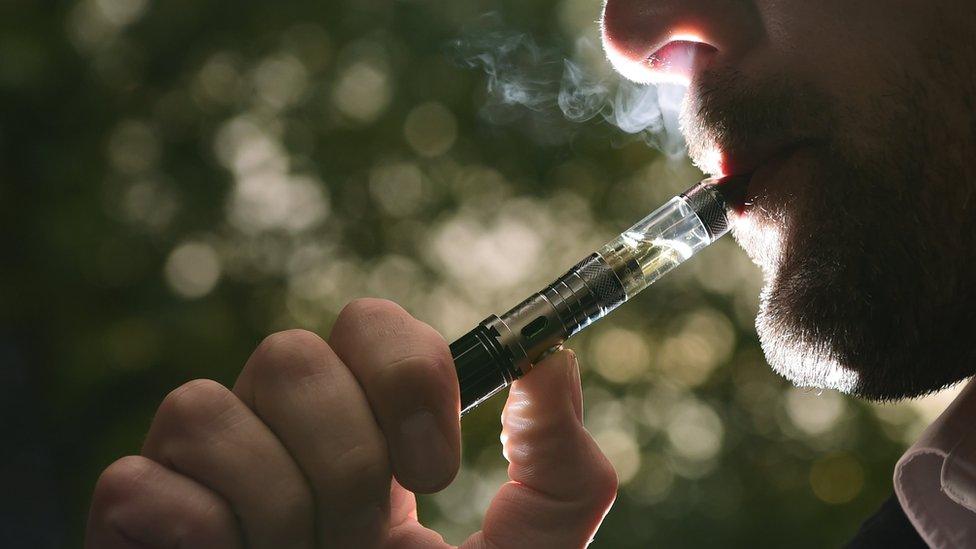More Americans try vaping, says study, but fewer take it up
- Published

Some are worried that although vaping may help some stop smoking, it may also introduce non-smokers to nicotine
More adults are trying e-cigarettes but fewer are sticking with the habit, suggests US research.
The number of adults who tried vaping rose between 2014 and 2016 but ongoing use fell, external, the Journal of the American Medical Association (JAMA) says.
E-cigarettes - which deliver nicotine but not tar - have been marketed as a way to help smokers quit the habit.
Separate research suggests use by young Americans may be declining after rising continuously from 2011-2015.
It is illegal to sell vaping equipment to those under 21 years old in the US, but vaping has become so popular among schoolchildren that the name of one e-cigarette, the Juul, is now commonly used as a verb ("to Juul"), external.
Some fear that vaping is turning many schoolchildren who would never have smoked into nicotine addicts.
What does this latest research say?
Previous studies have reported soaring use of nicotine vapes among adults since 2010.
The researchers who published their findings in the JAMA looked at the responses given by about 100,000 Americans aged over 18 who took part in national health surveys in 2014, 2015 and 2016.
Could vaping help smokers stub out cigarettes for good?
They found that the proportion who had tried vaping rose from 12.6% in 2014 to 13.9% in 2015 and 15.3% in 2016.
However, the prevalence of current users (who used e-cigarettes every day or on some days) fell - from 3.7% in 2014 to 3.5% in 2015 and 3.2% in 2016.
Does this mean the tide is turning and vaping is starting to decline?
No, it's too early to draw that conclusion, say the study's authors, external.
"These trends suggest that some individuals are trying but not continuing use of e-cigarettes, but further investigation with individual longitudinal on use of both e-cigarettes and other nicotine products is needed," they wrote.
Singapore bans vaping to 'protect its youth'
And not all of the survey respondents were vaping less.
Vaping increased significantly among those who had never smoked, the authors report - concerning because "these never smokers were being exposed to nicotine and other harmful ingredients".
And that's also the worry about usage among school-age minors?
Exactly.
The US Food and Drug Administration acknowledges that vaping has become "wildly popular with kids" and has recently launched a crackdown on outlets which illegally supply the underage, with a focus in particular on the fashionable Juul devices.
The journal references survey findings that suggest that the use of e-cigarettes by high school students soared between 2011 and 2015, but then declined between 2015 and 2016, external.
Again, it's too early to say if this is a long-term trend.
Some have even raised worries that many schoolchildren don't understand that Juuls - which come in flavours including mint, fruit medley and crème brûlée - are e-cigarettes and contain nicotine, so may not answer survey questions correctly.
- Published7 April 2017

- Published21 September 2017
